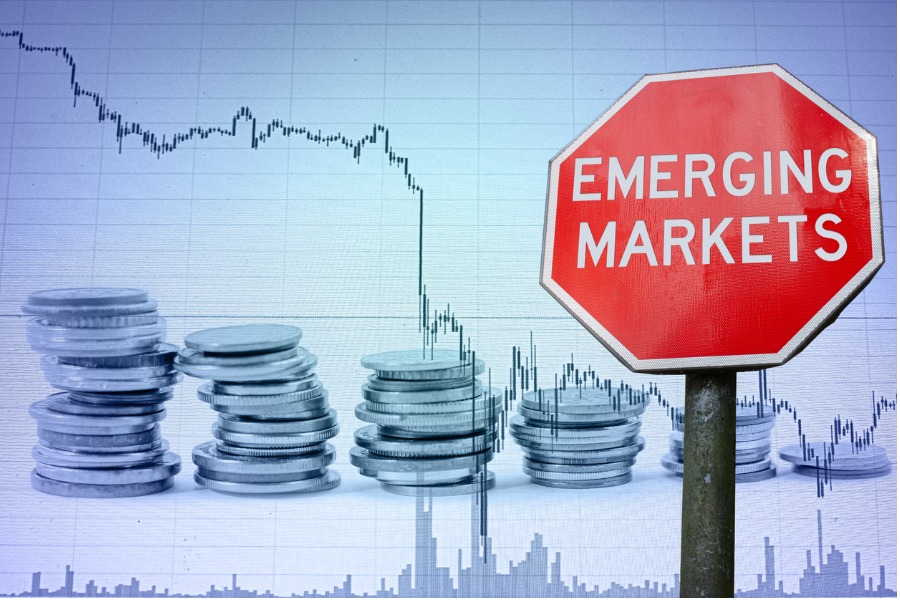

The balmy days of dovish monetary policy that fueled a rally in emerging-market bonds looks to be over as central banks across the developing world turn more hawkish.
Returns from emerging-market local-currency debt are trailing their dollar-denominated peers by the most in two years as resurgent inflation has damped the prospect of further interest-rate cuts in Latin America and Eastern Europe. At the same time, policymakers in emerging Asia have signaled an increasing unwillingness to ease policy before the Federal Reserve.
“I definitely think the easy money is gone,” said Robert Samson, a fund manager in Singapore at Nikko Asset Management, which oversaw $240 billion at the end of March. “Duration hasn’t really paid anywhere with curve inversion and the Fed higher for longer.”
The renewed hawkishness is upending a bet which earlier this year was hailed as a “once-in-a-generation” opportunity to buy emerging-market local debt. Not only has investor enthusiasm been damped by the diminishing prospect of rate cuts, but a supercharged dollar is dragging down developing-nation currencies.
Emerging-market local bonds have handed investors a loss of about 1% this year, after rallying by more than 6% in 2023, based on a Bloomberg index. In contrast, a corresponding gauge of dollar debt has returned 2.5% since the end of December.
Amid the recent hawkish developments, Brazil’s inflation topped forecasts in May, while Mexico’s central bank said last month sticky prices pressures are a reason to be cautious about further easing. Meanwhile, Peru’s policymakers unexpectedly halted rate cuts last week amid concern about consumer prices.
In Europe, Hungary’s central bank said it’s near the end of its easing cycle, while the Polish government’s wage plan may delay rate cuts. In Asia, Thailand’s policymakers kept rates on hold last week after inflation quickened, while their peers in Taiwan boosted the reserve requirement ratio for banks in a form of policy tightening.
“We think the relatively brighter growth outlook and still somewhat high inflation rates suggest that it is not yet time for EM Asia central banks to start easing,” wrote Barclays Plc. economists including Brian Tan in a note Friday.
Looming over all is the Fed’s higher-for-longer mantra that’s shrinking the scope for policy easing in emerging markets.
The Fed “is a significant headwind for progress in the second half,” said Rajeev De Mello, a global macro portfolio manager at GAMA Asset Management SA in Singapore. “All the central banks worldwide, even beyond EM, were hoping that in a way the Fed would help them out by sticking to the initial plans of cutting rates.”
The growing hawkish signs are already helping to trigger investor selling. The $2.7 billion VanEck JP Morgan EM Local Currency Bond ETF, the world’s largest ETF tracking developing-nation debt, has seen net outflows over the past three months, according to data compiled by Bloomberg.
Some see the recent pullback in local-currency bonds as a reason to be bullish.
Value is re-emerging for emerging-market debt after rate cuts have been priced out, and political risks in Mexico and Brazil are now accounted for, said Shamaila Khan, head of fixed income for emerging markets and Asia Pacific at UBS Asset Management in New York.
“It’s probably looking more attractive than it has over the last several months,” she said. “We do think that the local space has potential to perform quite well going into the end of this year, even whether it’s one rate cut or two rate cuts from the Fed.”
William Blair International Ltd. also sees value re-appearing and is even funneling money into frontier markets.
“We currently have between 12% and 15% in local frontier markets with a risk limit of 1% in each market, so do have a good diversification there,” said Daniel Wood, a fund manager at William Blair in London, adding he favors countries including Kenya, Nigeria and Pakistan. “You’re in the sweet spot now where you’re enjoying high carry with strong multilateral support.”
Others, such as T. Rowe Price, say investors may have to wait a while until emerging-market local bonds resume their rally.
“Over the course of the past 12-to-18 months, returns have been fairly attractive,” said Leonard Kwan, a fund manager at T. Rowe Price in Hong Kong. “From here, some parts of the opportunity are gonna slow down. You’re gonna earn some income in the meanwhile and then wait for the next leg to come, which may happen towards the later part of this year or into the first half of next year.”

Relationships are key to our business but advisors are often slow to engage in specific activities designed to foster them.

Whichever path you go down, act now while you're still in control.

Pro-bitcoin professionals, however, say the cryptocurrency has ushered in change.

“LPL has evolved significantly over the last decade and still wants to scale up,” says one industry executive.

Survey findings from the Nationwide Retirement Institute offers pearls of planning wisdom from 60- to 65-year-olds, as well as insights into concerns.
Streamline your outreach with Aidentified's AI-driven solutions
This season’s market volatility: Positioning for rate relief, income growth and the AI rebound
